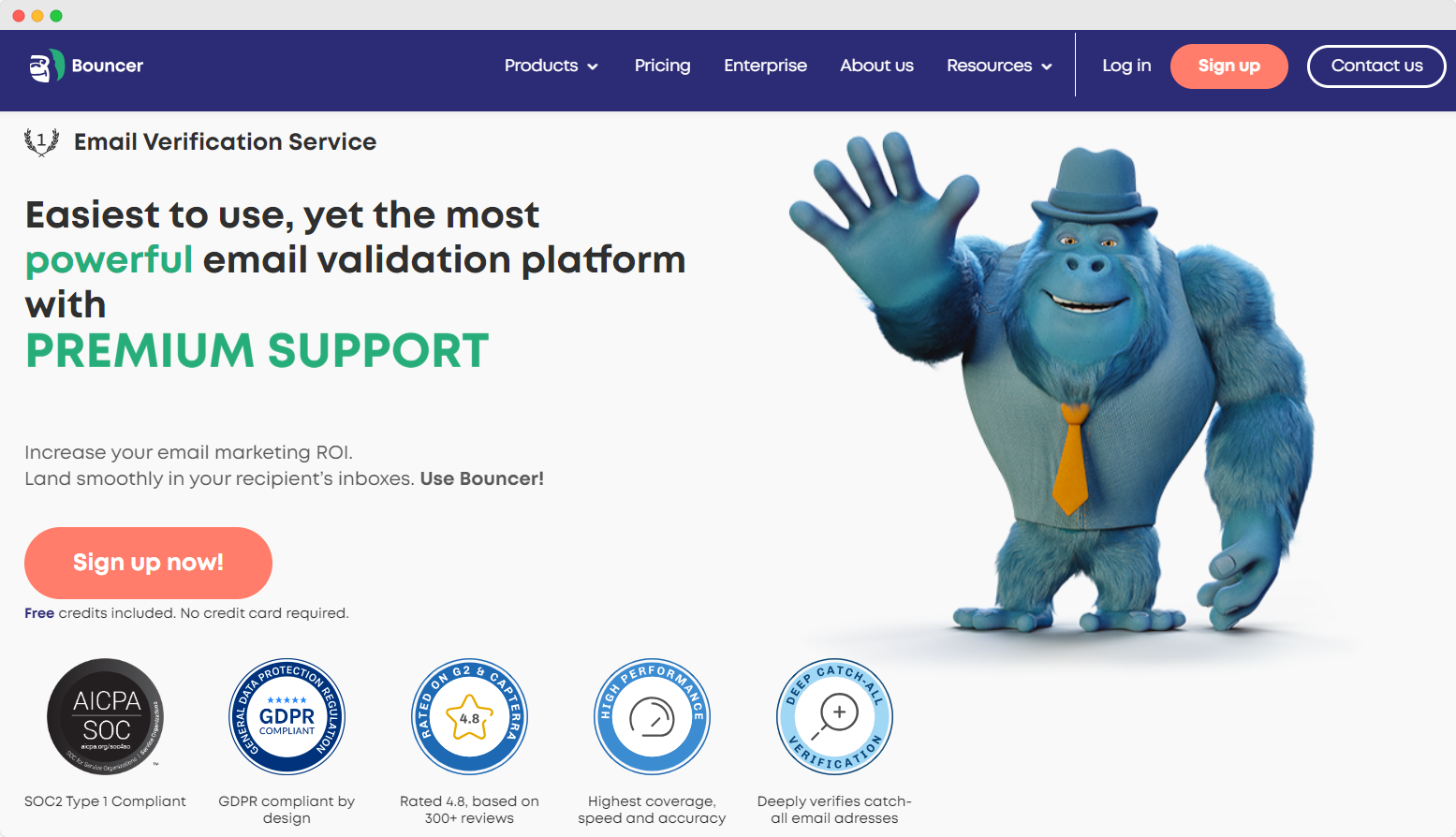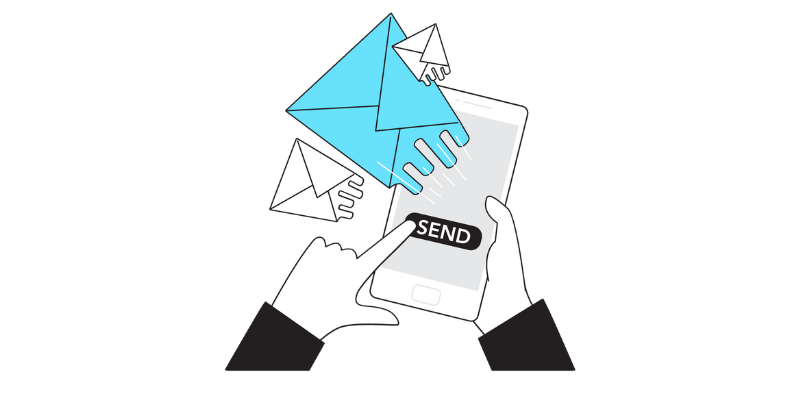Keeping your email list clean is essential for your email-sending activities, but you already know this! Most commonly just after the question, ‘Why should I clean my email list’comes the ‘How often should I clean my list?’.
And even though the answer for it is far more complex, it is necessary to schedule list verification activities in your mailing calendar ASAP, if you want to keep your inbox placement top-notch.
If you want to read more about email list hygiene, download our 2024 email list hygiene report!
Why should I verify my list more than just once?
Unfortunately, there is a wrong perception among marketers, that once your list is verified you are done with list cleaning for a long while or even for good. Nope! Addresses on your list go obsolete all the time!
It is estimated that over 20% of all emails expire every year! That is why list cleaning should be a repetitive activity, that you will need to do over a specific period. In this article, we will try to help you find out what a ‘specific period’ might mean in your case and why an email verification tool such as Bouncer can help stay out of the spam folder.
How often should you clean email lists?
When searching the Internet for the best email verification frequency, the most repetitive answers were either ‘as often as you need to’ or ‘every 3 months’. That’s not helpful at all, as it is too general and does not consider all the components of the quality of the data.
Invalid email addresses can cause a lot of problems with email service providers, as well as your recipients: high spam complaints, low email deliverability, botched email campaigns, an unengaged contact list…
The frequency of email verification should be mainly based on three factors:
How often do you send out your campaign?
The need for email validation is directly dependent on the frequency of your email send out. If you are only sending your campaign every 4 months (or more) then it will be recommended to verify your list before each send-out.
However, if you email your recipients every month or less, then you should do it periodically, but it might not be necessary to do so before every campaign. When you do regular email marketing campaigns, you also need regular email verification services.
Errors like spam traps or syntax errors in your list can happen to the very best, and the end result is tanked engagement rates. A regular verification process helps massively here.
The method that you use to collect emails
One aspect that impacts the quality of your email lists is the fact that they become invalid over time, however, another important component is the number of mistyped or fake email addresses, that you collect from sign-up forms.
You might use a double opt-in (subscriber needs to confirm their subscription by clicking on the link in the email message from you) or a single opt-in. Additionally, you can add real-time email verification to your email collection form, where the address is verified at the moment of entry.
Double opt-in with real-time email verification – that is the most secure method of collecting emails, as it prevents sign-ups with mistyped emails, disposable domains, invalid addresses etc. Plus it gives you a confirmation that the person that signed up did use an inbox that they have access to, so they are interested in your value.
Single opt-in with real-time email verification – prevents mistypes and disposable email, but the subscriber might use a mailbox that they don’t even have access to.
Double opt-in – it won’t stop sign-ups with temporary emails, that are usually valid for up to 72 hours. Most email providers let these slip through.
Single opt-in – you are basically collecting everything from sign-ups with temporary inboxes, ‘fat finger’ mistypes, to sign-ups with invalid email addresses.
Types of email lists that you use: B2B or B2C
If the value proposition of your business is targeted at other companies, you will need to clean your email lists more often. That is because B2B email lists tend to expire more frequently than B2C. People change jobs, therefore emails that were valid in your last campaign might now hard bounce.
In B2C, where clients use their personal emails, is more steady, often one email address that we have will stay with us for decades, although people change surnames, move to different mailbox providers, etc. It’s more likely that a real person is behind the email address, and you should not use email verifiers as often as in B2B.
On the flip side, these customers are just as likely to use temporary email addresses on your signup forms, which is where a real-time API comes in really handy.
Additional info
If you are giving away some sort of freebie with the sign-up (free trial, pdf, ebook, tips or any other lead magnet), please consider that some people might abuse your generosity, and use invalid/temporary emails to get the content without leaving their real address. If that is the case, you might need to clean your list more often.
Optimal email verification frequency for B2C and B2B
You can find estimated period suggestions in the tables below:
How often to verify a B2C list?

How often should you verify a B2B list for bad emails?

As you can see from the table above, if you are using just a single opt-in to collect your B2B emails, and you send out your campaign weekly, then the risk of collecting mistyped emails + expiration of other emails on your list is so high, that you might need to verify your list even every two weeks!
On the other hand, if you send out emails every month to your B2C list, collected with double opt-in, you can check email validity every 3 months, and your sender reputation should be safe from a high bounce rate.
How should I clean my email list?
The best way to remove invalid emails from your list (so the ones that will generate a hard bounce) is to use an email checker like Bouncer.

Bouncer helps improve your email deliverability rates by removing all types of bad email addresses: outdated, disposable email addresses, spam traps, catch-all addresses, duplicate emails, and more. Our email validator is one of the most accurate in the industry, at 99% and higher.
Email verification tools are designed to spot bad emails without sending any message to the addresses. By using such you are not risking your sender reputation and therefore your email deliverability. Bulk email verification can lower your email bounces and improve the overall effectiveness of your email marketing efforts.
You might do some list cleaning activities yourself, like removing spammy-looking addresses or the ones that have an incorrect format, but DIY list cleaning is usually very time-consuming, and not as effective as using email verification.
Verifying your entire list manually to find valid email addresses can take days or weeks. On the other hand, an email verification process helps you find valid addresses in a matter of minutes for the average list.
When should I verify my list?
You now know how often you should verify your list and how to do it, but what is the best time to do it? The answer here is simple: as close to the start of your campaign as possible!
As emails tend to expire over time, a list verified two weeks ago, today might result in few hard bounces. That is why the recommended time of list cleaning is up to 72 hours prior to the send out.
You can also use real-time verification for your email program. Tools such as Bouncer’s API allow you to add a piece of code to your website, and as soon as someone adds an email to a registration form field, Bouncer can tell you if the address is good or not.
This helps you weed out temporary, outdated, and inactive email addresses without lifting a finger. This email list cleaning service covers the basics first: it checks for email syntax and then goes on to verify the address is active and in use.
By removing risky email addresses at the point of entry with our email validation API, you can reduce your email bounce rates and bypass the spam filters with ease.
A quick recap of the risks of not keeping your email lists clean
We appreciate that most of you understand the benefits of keeping all of your email lists clean and know also how often to clean your email list, but for those of you who have stumbled into this article and don’t—well, here’s our quick recap, just for you.

As an email marketer, your primary goal is to make sure your campaigns land in the inboxes they’re intended for. A list that isn’t clean and healthy creates so many issues that can affect that.
In turn, the downturn in your delivery directly increases your bounce rate, and that’s really bad news for your sender score, how the ISPs and their servers judge your domain and begin applying those unwanted black marks to your From email address.
They’re the items that you really need to avoid, and that’s why we’re here to help.
Making sure your bounce rate is as low as it can possibly be is one of the major advantages a clean list offers.
The associated benefits you’ll achieve are the difference between a successful campaign sends and your email marketing ROI:
- reduced marketing costs
- reduced spam complaints and fewer inactive subscribers
- a healthy sender score
- higher open and click rates with your target audience
- a more engaged audience that reads your marketing messages
With all that in mind, you’ll see that it’s imperative to keep those lists clean, but also to know how often to clean an email list.
Can Bouncer tell me if I should verify my list?
Well, even though you’ve received pretty good tips and instructions in this article, you might still feel unsure if this is the correct time that to verify your list. And for such dilemmas, Bouncer has just the right tool to help you make an easy decision: a free email verification sampling tool!
You will only need to upload your list to our platform, and based on a small (randomly selected) sampling, we will provide you with a bounce estimate of the particular list. Based on that you can either leave your list uncleaned, as the bounce estimate is super low, or you can proceed with email validation.
With Bouncer’s free email verification sampling tool you should be able to easily find out how often you should clean your email list.
Sign up today and verify your first 100 emails completely free!

